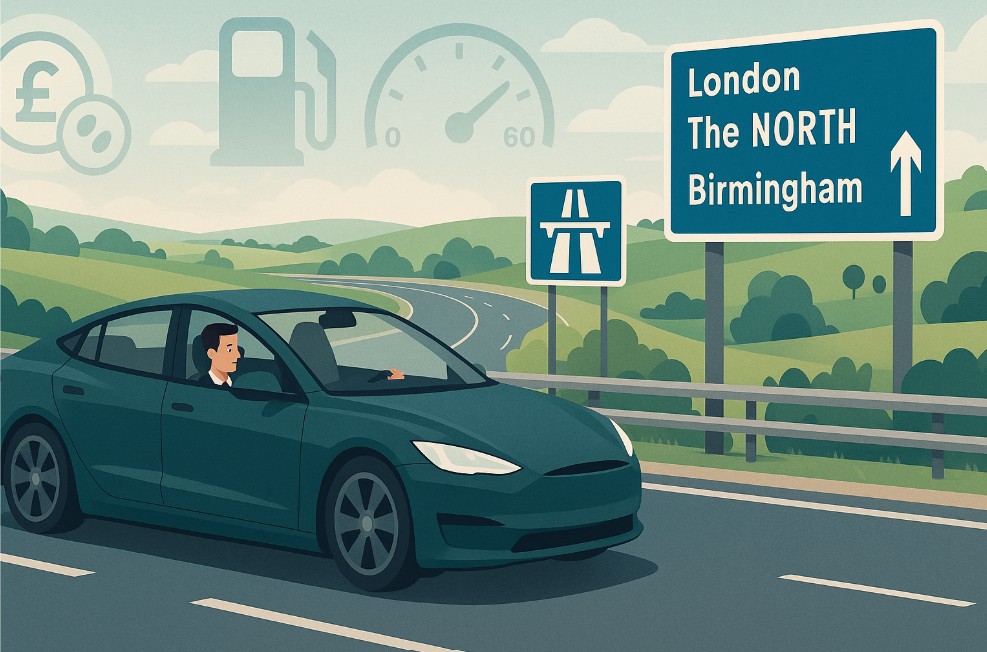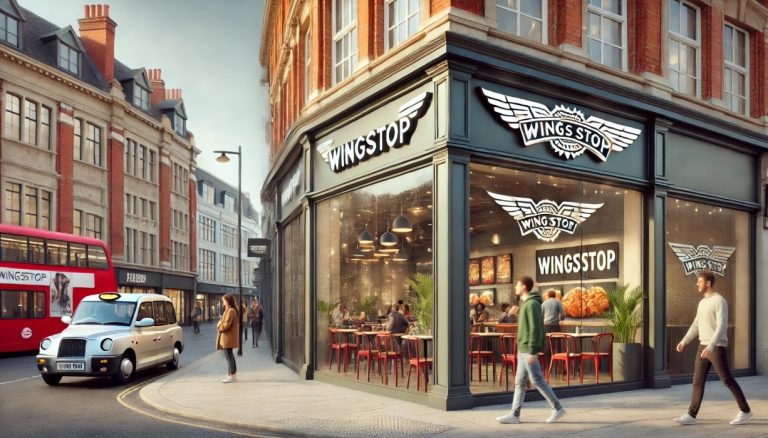Government Mileage Rate 2025: What UK Businesses Need to Know Now?
Why are UK mileage reimbursement rates unchanged in 2025 despite rising vehicle and fuel costs? What do businesses, employees, and the self-employed need to understand about the current HMRC rules on mileage allowances?
As the 2025/2026 tax year begins, thousands of UK workers and employers are again revisiting the rules surrounding government mileage rates.
The HMRC-approved mileage allowance remains a vital method for managing tax-efficient reimbursements related to business travel. Yet, many continue to be uncertain about how these rates apply in various work scenarios, from personal car usage to company-owned vehicle reimbursements.
In this comprehensive guide, we explore everything UK businesses need to know about the government mileage rate 2025, its application, limitations, and compliance requirements.
What Is the HMRC Mileage Allowance and Why Does It Matter?
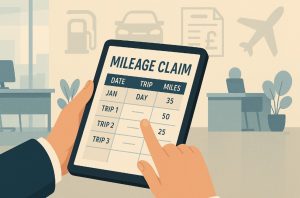
The HMRC mileage allowance (also known as Approved Mileage Allowance Payments or AMAPs) is a tax-free reimbursement rate for employees who use their personal vehicles for business-related journeys.
This allowance is designed to simplify the process of claiming expenses, allowing a fixed amount per mile instead of tracking every fuel purchase or maintenance cost.
Instead of manually calculating fuel, tax, servicing, and depreciation separately, HMRC offers standardised per-mile rates. These rates allow employers to pay employees tax-free, up to a fixed threshold. Anything above the allowance becomes taxable income.
This standardisation benefits both employers and employees by reducing administrative burden and helping with compliance.
How Much Is the Government Mileage Rate for 2025?
For the fourteenth consecutive year, HMRC has kept the government mileage rate unchanged. The current rates apply from 6 April 2025 to 5 April 2026, and are as follows:
HMRC Mileage Rates for Private Vehicles
| Vehicle Type | First 10,000 Miles | Over 10,000 Miles |
| Cars and Vans | 45p | 25p |
| Motorcycles | 24p | 24p |
| Bicycles | 20p | 20p |
These rates cover fuel, wear and tear, insurance, servicing, and depreciation. Hybrid vehicles are treated as either petrol or diesel for the purposes of this calculation.
Privately owned electric vehicles are reimbursed using the same rates as petrol and diesel cars.
While these rates are simple and widely used, they do not reflect inflation or rising fuel and insurance costs, leading some to question whether the allowance is sufficient in today’s economic conditions.
How Does the 10,000-Mile Threshold Work for Cars and Vans?

For cars and vans, the mileage allowance drops after the first 10,000 business miles per tax year. The first 10,000 miles are reimbursed at 45p per mile, and anything above that threshold is paid at 25p per mile.
Example Calculation:
If an employee drives 18,000 miles for work in one year:
- 10,000 miles × £0.45 = £4,500
- 8,000 miles × £0.25 = £2,000
- Total Reimbursement: £6,500 (tax-free)
This system encourages businesses to cap travel or consider alternative options once employees exceed the 10,000-mile mark.
How Are Company Car Mileage Claims Handled Differently?
When using a company-owned car, the advisory fuel rates (AFRs) set by HMRC are used instead of AMAP rates. These rates are updated quarterly and are based on average fuel prices and vehicle efficiency.
Advisory Fuel Rates (September 2024 Onward)
| Fuel Type | Engine Size (cc) | Rate Per Mile |
| Petrol | Up to 1400 | 13p |
| 1401–2000 | 15p | |
| Over 2000 | 24p | |
| Diesel | Up to 1600 | 12p |
| 1601–2000 | 14p | |
| Over 2000 | 18p | |
| Electric | All Sizes | 7p |
These rates apply only when reimbursing employees who use company cars for business journeys or when calculating repayment from employees who use the company vehicle for personal use.
Electric cars used as company vehicles receive a flat 7p per mile reimbursement rate. Plug-in hybrids and hybrids are treated as petrol or diesel vehicles, depending on their fuel type.
Who Can Claim Mileage and How Does Employment Status Affect It?
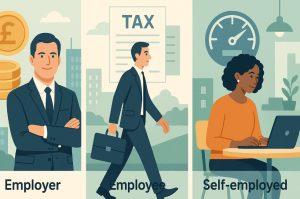
Employers
Employers can pay AMAP rates to employees who use their own vehicles for work-related journeys. Reimbursements made within the approved limits are tax-free. Any payments above HMRC’s rates must be reported as a benefit and taxed accordingly.
Employers are also permitted to pay a passenger rate of 5p per mile if employees carpool with colleagues for business journeys.
Maintaining clear and accurate records is essential for audit purposes.
Employees
Employees can claim tax relief on mileage if their employer:
- Pays below the HMRC-approved rate
- Offers no reimbursement at all
Employees should either file a P87 form or claim via Self Assessment to recover unpaid mileage expenses. It’s important to keep detailed records to support claims.
Self-Employed Individuals
Self-employed workers can deduct business mileage from their taxable income using the standard mileage method:
Miles travelled × HMRC mileage rate = Total deduction
Alternatively, they may calculate actual running costs and claim based on receipts, but this method is often more time-consuming and complex.
Which Business Journeys Qualify for Mileage Claims?
Not all work-related travel qualifies for mileage reimbursement. HMRC provides strict definitions to prevent misuse.
Eligible Journeys
- Travel between two places of work
- Travel to a temporary business location
- Client visits, off-site meetings, or conferences
Non-Eligible Journeys
- Daily commute to a permanent workplace
- Short-distance errands near home
- Mixed-purpose travel primarily for personal use
Only journeys solely for business and not part of a regular commute are eligible for tax-free reimbursement.
What About Reimbursement for Motorcycles and Bicycles?
Mileage reimbursement also extends to motorcycles and bicycles, which have a flat rate regardless of distance travelled.
Motorcycle Example
- Travelled 5,000 miles for business
- 5,000 × 24p = £1,200 tax-free reimbursement
Bicycle Example
- Travelled 450 miles
- 450 × 20p = £90 tax-free reimbursement
Despite having no fuel costs, these vehicles still experience depreciation, maintenance, and wear, which the allowance aims to cover.
How Should Mileage Be Tracked and Reported for HMRC?
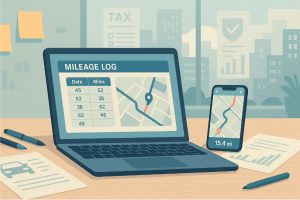
HMRC requires detailed documentation for all mileage claims. Inaccurate or missing logs can lead to penalties or rejected deductions.
A proper mileage log should include:
- Date of the journey
- Starting and ending location (with postcodes)
- Purpose of the trip
- Miles travelled
While paper logs are acceptable, digital options are more reliable. Tools like Driversnote, MileIQ, or accounting platforms like QuickBooks can automate tracking, generate HMRC-compliant reports, and reduce administrative hassle.
What Are the Changes to Vehicle Benefit Charges in 2025?
In the Autumn Statement 2024, the government announced changes to the van benefit and fuel benefit charges for 2025/26:
| Benefit Type | 2025/26 Rate | Increase from 2024/25 |
| Van Benefit Charge | £4,020 | +£60 |
| Van Fuel Benefit Charge | £769 | +£12 |
| Car Fuel Benefit Multiplier | £28,200 | +£400 |
These changes affect the taxable value of company vehicle perks and are relevant for businesses offering these benefits to employees.
How Can UK Businesses Stay Compliant with Mileage Rules?
Staying compliant involves:
- Reimbursing within HMRC-approved rates
- Recording business mileage in detail
- Avoiding payment for non-eligible travel
- Using accurate software to track expenses
- Understanding updates on fuel and vehicle benefit charges
Clear policies and proper logging help prevent issues during HMRC audits and ensure tax-efficient reimbursements for employees.
Frequently Asked Questions
Can I claim mileage if I receive no reimbursement from my employer?
Yes. You can claim the full amount up to HMRC’s approved rate via your Self Assessment return or using form P87.
Are company car mileage rates the same as private vehicles?
No. Company car mileage is reimbursed using HMRC’s advisory fuel rates, which vary by engine size and fuel type.
Is the mileage allowance taxable?
No, provided payments stay within HMRC’s limits. Any excess is treated as taxable income.
Can I claim additional expenses like tolls or parking?
Yes, but these fall outside of AMAP. They must be claimed as separate business expenses.
Do hybrid cars have separate mileage rates?
No. Hybrids are treated as either petrol or diesel vehicles based on their fuel type for reimbursement purposes.
What happens during a mileage audit?
HMRC may request logbooks or digital records to verify claims. Incomplete or inconsistent entries could lead to denied claims or penalties.
What software is recommended for mileage tracking?
Tools like Driversnote, MileIQ, and QuickBooks are widely used for creating compliant mileage logs.

